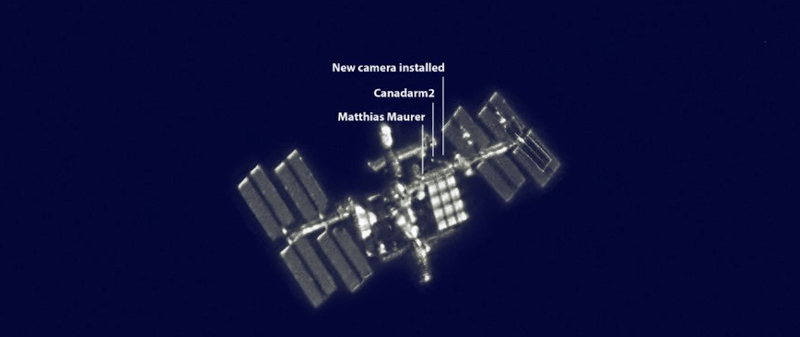If you go to, say, a football game, you probably don’t get to see as much of the game as close as you do when you stay home and watch on TV. But there’s something about being there that counts. That’s probably how [Sebastian Voltmer] feels. While we’ve all seen video of astronauts and cosmonauts spacewalking, [Sebastian] managed to take a snapshot of a pair of spacewalkers from his telescope.
Of course, this wasn’t your ordinary department store Christmas gift telescope. The instrument was a Celestron 11 inch EdgeHD Schmidt-Cassegrain telescope on a very expensive GM2000 HPS mount. An ASI290 planetary camera took the shot. You can see the gear and more about the photos in the video below.
Like a football game, you could probably see more watching NASA Select TV, but somehow it just isn’t the same. Upon further analysis, [Sebastian] found he has taken pictures of both astronauts, although the first picture only identified [Matthais Maurer] who, oddly enough, is from the same town as [Sebastian].
Our hat is off to anyone who can capture these kinds of images. We have trouble enough taking selfies. While the spacewalk in the picture took place over seven hours, the ISS would only have been visible from [Sebastian’s] location for a small fraction of that. So he couldn’t do a 12-year long exposure. While you can build your own astrophotography gear, most of what we have seen isn’t going to easily reproduce this feat.
















I’m still trying to wrap my head around pointing a telescope at something that is 400 km (~250 miles) away and being able to make out that level of detail. Stack 100 frames from a video with FireCapture or AutoStakkert is impressive.
It would be ultra difficult with el cheapo scopes. I can grab onto a lot of objects with my bottom line celestron manual. fancy scopes these days have motors and you can program them. While I am no master of this nor do I have the time, there are people that are great at this. Basically ya line em up with known locations, uses gps time, calculates the location and you can literally just choose what you wanna see from a list and it will automatically stay in alignment.
Impressive enough just to get the tracking working (the ISS is traversing its own length in literally less than the blink of an eye), but the optics is also darned good.
1 arcsec would be considered good resolution for a backyard setup of this class, which corresponds to 2-3 meters at the distance of the ISS.
It’s apparent that with good stacking and processing and no motion blur you can get even better; the Dragon’s shape is clearly resolved, but it is only 4m in diameter, for example.
i don’t know, seeing the ISS at all in a regular hand-driven telescope is a little bit of an accomplishment…you really have to line up at where it will be and then wait for it to cross your view and then you can follow it, with some effort. obviously you won’t take good pictures like that.
but with a decent electric mount, i don’t think it’s impressive at all. you just hook it up to software that knows the path and it will follow it rock steady…that’s just what those mounts can do!
The ISS does cross the sky rather faster than most electric mounts I’ve ever looked at move though – everything else up there is damn nearly static so there isn’t a need to traverse all that fast, to view anything else the only real requirement is its fast enough the operator doesn’t fall asleep waiting on it…
Ahh, so it’s another case of “Just throw enough money at the problem and it will go away.” Got it.